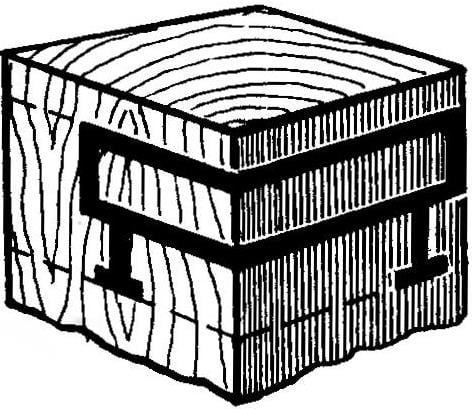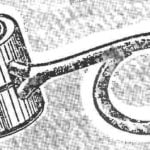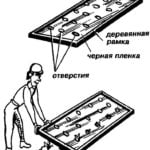 In the manufacture of furniture and then have to drill, cut or hollowed holes to connect the wooden piece. For this we first have to perform a large number of marking operations. To facilitate these preparatory operations will use the simplest patterns, which are easy to manufacture from thin cardboard.
In the manufacture of furniture and then have to drill, cut or hollowed holes to connect the wooden piece. For this we first have to perform a large number of marking operations. To facilitate these preparatory operations will use the simplest patterns, which are easy to manufacture from thin cardboard.
Here are a few examples of such marking “framework”. Curve A is for occasions when you need to punch a wooden workpiece in a bar (e.g., bar-side-bar in the leg of the future chair). It is a cardboard frame, the height of the internal “window” which corresponds to the thickness Veresaeva parts, and the width is calculated so that when overlaying frames on the corner of the space bar, most of it fit the width of the part and the smaller one would show the depth of cut. If there should be a selected another of the same groove, the frame is cut with “legs” that when marking will show how it is necessary to retreat the mold from the original groove.
If you intend to make a bookcase with open shelves or Cabinet type of book (by cutting all shelves in side support panels), it is advisable to use the option patterns B. middle part corresponds to the mechanical dimensions of shelves and hooks-“legs” (of appropriate size) will provide the necessary indent to the next shelf, and its horizontal position. Because the shelves are similar and should reside at the same distance from each other, this pattern greatly simplifies and unifies the process of marking.

The approximate form marking patterns:
And for nests under thorn itotal; B — under the direct tongue-and-groove; C — the versatile option
In General, the shape and size of patterns you can lay the various marking information, which significantly simplifies and speeds up preparation connect the wooden parts.
A good example of this and a curve V. its Main purpose is to determine the location for gouging in a bar rectangular socket under the tongue. The inner window as in the previous cases, repeat the mechanical dimensions of the stud. And both “feet” patterns — dual function. Attach the short “leg” to the edge of the bar, get away from him the future nest. And if you attach it to is already marked or hollowed-out nest — the edge of the long “legs” will show next the application of patterns for marking the next nest. If, however, mark the location of socket, and bend the long “leg” on another plane of the bar will be able to note where to locate the slot perpendicular to the attached side-bar.
I think that these options will prompt the homebrew ways of making their necessary for their particular needs, patterns; cardboard (if you need one-time) or from a rigid flat material (plastic, thin sheet metal if patterns are designed for multiple use).
R. KOMISSAROV, S. Kryukovo, the Rostov region.



